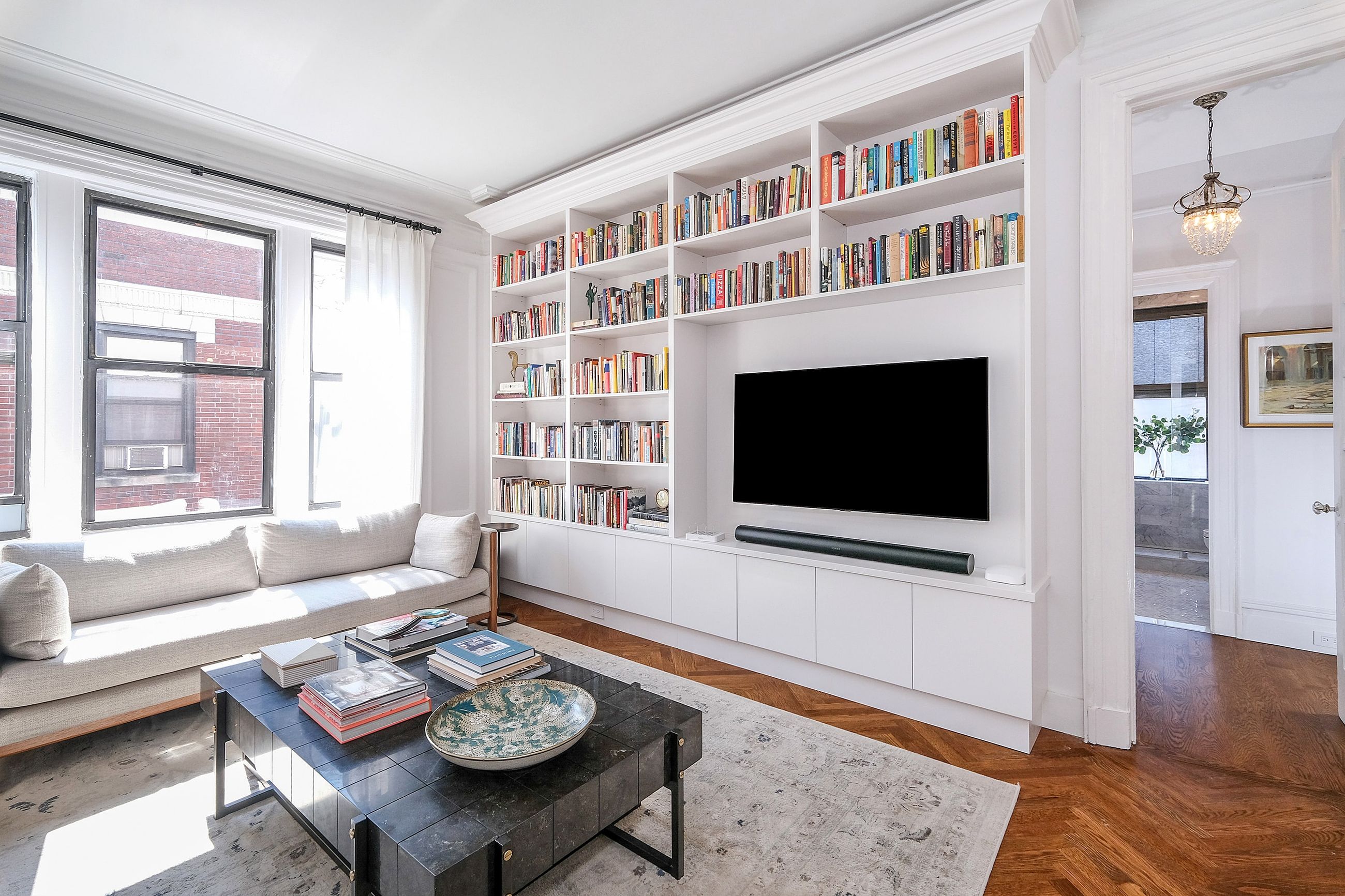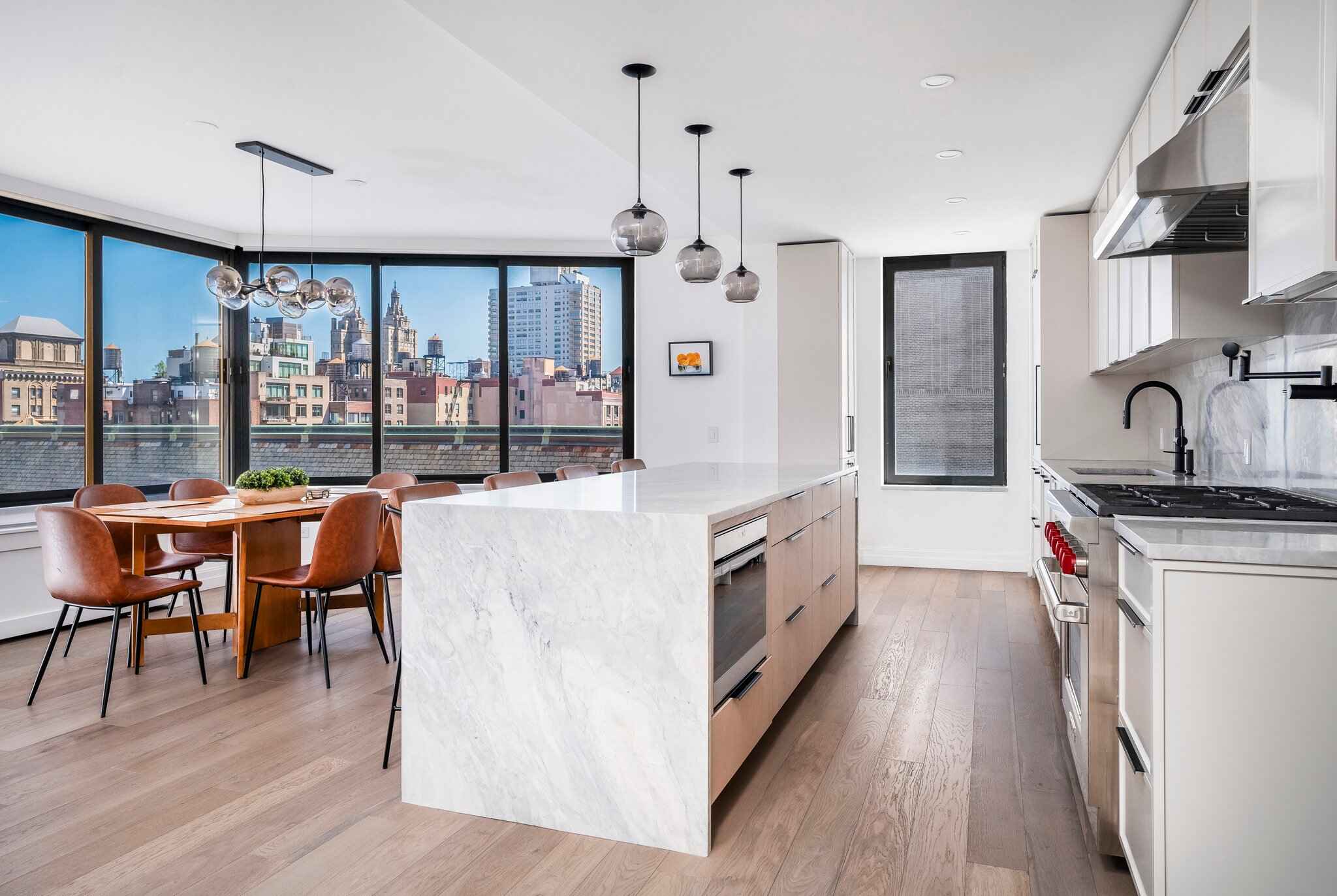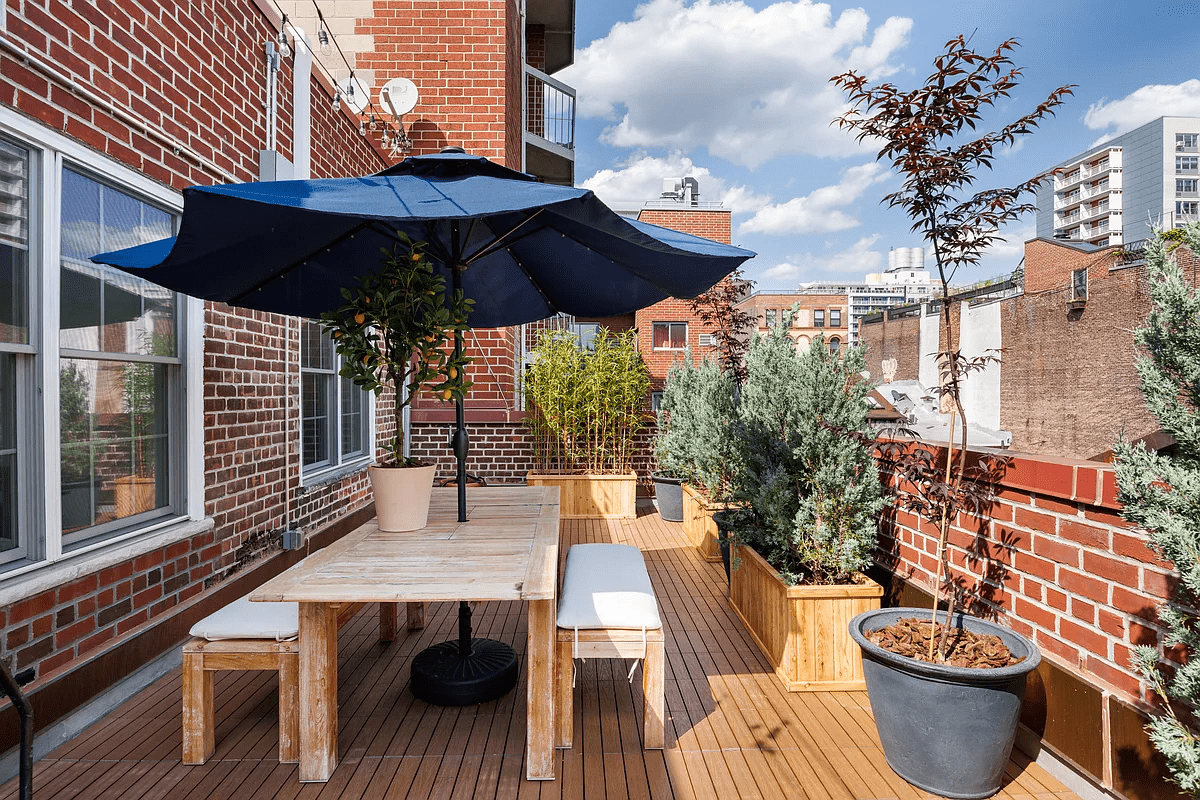Can You Combine Two Condo Units in NYC?
Thinking of combining two NYC condos into one? Our extensive guide outlines what’s possible, what’s not, and how a design-build partner makes the process smoother.
June 18, 2025
|
-min.JPG)
Can You Combine Two Condo Units in NYC?
Combining two condo units in NYC? Learn how to assess feasibility, approvals, and construction timelines with this expert design-build guide.
TABLE OF CONTENTS
- Assessing Feasibility: Can Your Condo Units Actually Be Combined?
- Legal Framework: NYC Regulations for Combining Condo Units
- Navigating The Condo Approval Process For Unit Combinations
- Construction Challenges Specific To NYC Condo Combinations
- Success Stories: NYC Condo Combination Case Studies
We’re often asked by potential buyers and longtime homeowners: “Can you combine two condos in NYC?” The answer is indeed, yes. When one condo isn’t enough, combining two condo units provides an opportunity to maximize square footage with a custom floorplan that meets your needs - and in turn, ups your investment value. While not always an available option, the ability to combine your condo with an adjoining unit also offers a unique opportunity to create your expanded home base without leaving the building or neighborhood you’ve called home for years.
However, while combining two condo units into one is indeed an excellent way to stay put and earn more space, condo combinations in NYC involve complex regulations, approvals, and construction challenges unique to the City. For homeowners and potential buyers who are looking to combine condos, the following guide will walk through the entire process, from feasibility assessment to combination completion. Alexa, play Spice Girls “2 Become 1.”

Assessing Feasibility: Can Your Condo Units Actually Be Combined?
Before you start knocking down walls, the first step in combining two condos in NYC is determining whether the project is even feasible - both structurally and legally. Here are the fundamental factors to evaluate:
Adjacency, Structure & Building Policy
First and foremost, the two units must be adjacent (unless of course they are across the hallway and you’re also intent on buying the hallway space from your building) — either side by side (horizontal combination) or stacked vertically (vertical combination). Structural obstacles like load-bearing walls, plumbing stacks, or fire-rated separations between units may limit layout options as well as spike complexity and cost.
More important is whether your building even allows combinations. Not all do. Some condos have firm restrictions on combinations altogether (rare but it happens), while others have specific requirements, especially for vertical connections requiring internal staircases or any adjustments to common areas.
Horizontal Vs. Vertical Combinations
At a glance, the difference between horizontal and vertical combinations can be broken down quite simply:
Horizontal Combinations
Combining two units on the same floor is generally simpler. You’re likely dealing with fewer structural changes and less complicated approvals.
Vertical Combinations
Combining two units on different floors involves stair installation, which typically triggers tougher DOB and building requirements. Some buildings prevent vertical combinations altogether, while others may allow them only under strict conditions.
For a more in-depth breakdown of apartment combination types, read our popular article - Combining Two NYC Apartments Into One? Everything You Need To Know.
Reviewing Bylaws & Condo Declarations
When aiming to understand what level of condo combinations are allowed in your building, read your building’s bylaws and condo declaration. These are available through your managing agent or building board and typically outline what’s allowed, whether board approval is required, and any design or construction caveats you must accommodate.
When you partner with a design-build firm like Gallery, we review these documents on your behalf to verify your project goals align with building rules.
Structural Assessment Comes First
When any type of structural changes are part of your renovation plans—like removing walls, creating new stair openings, or combining two condos—the first step is understanding if those changes are even viable. That means involving a structural engineer familiar with NYC building types, especially co-ops and condos with layered requirements.
At Gallery, we coordinate that assessment on your behalf. Before you file with the city or approach your board, we walk the space and flag any structural limitations that could derail your vision. Many clients even contact us before purchasing a unit with major renovation plans, seeking early clarity on what is—and is not—possible. Considering a project with structural complexity? Let's chat.
What If Load-Bearing Walls Separate the Units?
If the wall between units is load-bearing, you are not out of luck — but the project becomes more complex. This means you’ll need plans from a licensed engineer outlining how the load will be transferred, plus DOB filings become a bit more challenging (fair enough). Removing or modifying load-bearing walls adds time, cost, and construction precautions, so identifying this early is essential to setting proper expectations for your condo combination.
MIN.jpg)
Legal Framework: NYC Regulations for Combining Condo Units
As you can see by now, the challenge associated with combining condo units in NYC isn’t only about knocking down walls and opening up floor plans. The extensive process involves multiple city agencies, filings, and compliance checks—particularly with the Department of Buildings (DOB). Whether you’re creating a duplex, joining two adjacent units, or opening up a corner line, understanding the regulations associated with your condo combo is essential before any construction begins.
NYC Department of Buildings (DOB) Requirements
In the eyes of the NYC Department of Buildings (DOB), combining two or more condo units qualifies as a major alteration—requiring an Alteration Type 1 (Alt-1) application. This filing triggers a more comprehensive review process, including full architectural plans, zoning analysis, and DOB plan examiner oversight.
As a full-service design-build firm, Gallery manages every step of this process on your behalf. We coordinate with registered architects and professional engineers to prepare and submit the Alt-1 filing, attend plan reviews, and respond to any DOB objections.
Certificate Of Occupancy (C Of O) Considerations
Another area we help manage is the Certificate of Occupancy (C of O) update, which is often required when combining condo units—especially if the original C of O lists each unit individually or the new layout alters egress or room usage. Since the updated C of O is typically issued after construction wraps and all inspections are passed, it can add time to the close-out phase. At Gallery, we coordinate all aspects of this process and handle logistical details like this side by side with the design process to streamline the timeline as much as possible.
Architect Or Engineer Approvals: When They Are Required
In NYC, any renovation involving changes to layout, structure, plumbing, HVAC, or electrical systems must be signed and sealed by a licensed architect or professional engineer—a requirement that applies to nearly all condo combinations, no matter how minor.
At Gallery, our in-house architect handles this on your behalf, producing drawings that meet DOB standards while aligning with your design goals. Beyond fulfilling a legal requirement, this ensures your renovation is code-compliant, safe, and fully insurable.
Special Rules For Landmark Buildings And Historic Districts
If your condo is located in a landmarked building or a designated historic district, combining units comes with an added layer of oversight from the Landmarks Preservation Commission (LPC). Even interior renovations—like merging two apartments—can fall under LPC jurisdiction if the work has any potential to affect the building’s character. This includes everything from modifying window openings to changing materials that may be visible from the street.
- Further Reading: Everything You Need to Know About Landmark Renovations In NYC

Navigating The Condo Approval Process For Unit Combinations
Even when two condo units sit side-by-side and the idea seems straightforward, combining them in New York City requires navigating layers of approvals—from the condo board and managing agent to the Department of Buildings. As a design-build firm, we guide clients through the full process, translating board expectations, coordinating paperwork, and managing logistics so nothing falls through the cracks.
Condo vs. Co-Op: A Smoother Path—but Not Without Hurdles
Compared to co-ops, condos generally offer a more streamlined path to combination projects. The board’s authority is limited to enforcing rules and reviewing any work that impacts building infrastructure. That said, approval is never automatic. Boards still expect a clean submission and want reassurance your project will be managed appropriately.
This is where Gallery steps in to identify concerns, prepare documentation, and handle communication with building reps on your behalf.
What Condo Boards Typically Require
Each building is different, but most condo boards expect a well-documented alteration package. We typically submit:
- Architect-Approved Plans
- Itemized Scope Of Work
- Proof Of Your Contractor’s Insurance And Licensing
- Refundable Deposit
- Alteration Agreement
We also include logistics plans that address noise, work hours, and protections for common areas. With our experience working in condo buildings across NYC, we tailor each submission to meet the expectations of both the board and the managing agent.
Timelines for board approval typically fall between 2 and 4 weeks, but we always prepare clients for the possibility of revisions or delays, based on the queue of approvals with the board
How We Help Secure Board Approval
Board approval is about more than paperwork. It is about presenting a thoughtful plan—and a reliable team. Here is how we guide the process:
Start Early
We engage boards and managing agents during design development—not after.
Customize Every Submission
No boilerplate packets. Every alteration package is tailored to your building’s standards.
Mitigate Risk
We address resident concerns upfront with built-in safeguards for noise, protection, and scheduling.
Prioritize Transparency
We keep boards, management, and clients aligned along the way—so surprises are avoided.
With design, filings, and coordination under one roof, we move projects forward without months of red tape. Read more about our full board approval and permitting process.
-min.JPG)
Construction Challenges Specific To NYC Condo Combinations
Once approvals are in place, now is time for construction. But, with potential building nuances and internal surprises - the build doesn’t come easy. Thankfully, as a design-build firm, we do more than manage construction—we strategize behind the scenes to confirm every aspect of your condo combination is both technically sound and blended beautifully - no matter what obstacles we might be up against.
Working Within Building Restrictions: Timing Is Everything
Renovating in NYC means operating on the building’s schedule, not just your own. Most condo buildings limit construction to weekday hours (typically between 9 AM and 4 PM), restrict access to elevators during high-traffic periods, and impose blackout dates around holidays or shareholder meetings. Not ideal, right? To accommodate, we coordinate closely with building management to pre-schedule noisy work, elevator protection, material deliveries, and debris removal—allowing us to make the most of every hour allowed on site.
Creating A Seamless Transition Between Units
Physically joining two apartments is surely difficult, but making them feel like a single, intentional home is where our expertise in apartment combinations is vital. Seamless transitions are built in during the design phase, where we address everything from uneven floors and ceiling heights to extending baseboard profiles and molding lines. In some cases, we’re required to re-route HVAC circulation paths, close former doorways, and rethink the way light flows from room to room. When we’re done, you’ll never even know there were two units to begin with.
Matching Older Finishes and Materials
Blending two spaces often requires tying new finishes into existing ones—particularly in older buildings where flooring, tile, or millwork may no longer be available. Our designers help clients select materials that complement and elevate what is already there or source custom alternatives when an exact match is needed.
Upgrading Electrical, Plumbing, and HVAC
Behind the walls, combining condos also means combining systems. As noted in our popular article, The Essential Guide to Electrical Updates in NYC Apartment Renovations, electrical systems require significant updates when combining two units. HVAC solutions may need to be redesigned to ensure appropriate airflow and temperature control across the various zones that have been added to the expanded space - especially in pre-war buildings. Plus, plumbing lines almost certainly need to re-routed to accommodate new kitchens, baths, or laundry rooms.
Our in-house team handles the planning and implementation of these updates first-hand, updating and integrating these systems cleanly and in full compliance with DOB codes and condo requirements. We also advise clients ASAP if electrical service or gas capacity upgrades will be required to support new appliances or layouts.
Minimizing Disruption to Neighbors
In a shared building, your renovation affects more than just your unit. We take neighbor impact seriously, and proactively plan for:
- Neighbor Notices To Create Up Front Awareness
- Hallway Protection & Routine Cleaning
- Strategically Timed Noisy Work
- Elevator Protection & Traffic Coordination
Plus, our client liaisons work directly with your building staff to streamline fast communication and respectful coordination during every stage of the renovation.
Success Stories: NYC Condo Combination Case Studies
See a few of our favorite NYC condo combinations below, each pulled from real projects in our renovation portfolio.
.jpg)
Brooklyn Heights Pre-War Co-Op Combination | 61 Pierrepont
When our clients welcomed their first baby, they saw an opportunity to create a more family-focused home without leaving their beloved Brooklyn Heights neighborhood. Having lived in the area for years, they valued the schools and community but needed more space. Instead of a full gut renovation, they chose to preserve the pre-war charm of their two-bedroom unit in their landmarked building at 61 Pierrepont, including original floors and the kitchen, while formally combining the space with a neighboring unit. Our team renovated all the bathrooms, added new wall moldings, updated the lighting, and installed HVAC, blending modern functionality with timeless details to turn their tight and dated apartment into a warm, family-friendly home. View the full renovation before and after.

Co-Op Apartment Combination Gut Renovation In Greenwich Village | 180 Thompson St
Our client purchased a one bed, one bath co-op in a seven-story building in the storybook Greenwich Village neighborhood. When a neighboring one bedroom sponsor unit became available, he purchased it with the goal of combining the two apartments. The vision: a more spacious home with two bedrooms, two bathrooms, and a unified outdoor deck created from the two existing terraces.
To bring that vision to life, we fully gut renovated both spaces—preserving only a recently updated guest bathroom—then combined them into an elegant, immersive residence tailored to his post-bachelor lifestyle. View the full renovation before and after.
Conclusion
If the opportunity to combine condos has presented itself and you’re looking to make the merge official, skip the headache of managing the logistics yourself by hiring Gallery as your full-service design-build renovation partner. To schedule a consultation, contact us today and we can start planning the process. Or, view our portfolio of condo and co-op renovation before and afters, then learn more about Gallery.
We are an award-winning design-build firm in New York City with a comprehensive renovation process that caters to our clients. We’re experts in pre-war apartment renovations, apartment combinations, room creations, full gut renovations and all that falls in between. Let us bring your dream home to life.

.png)
.png)



%20Gallery%20KBNY.JPG)

.jpg)

%20(2).jpg)


.jpg)
%20Gallery%20KBNY.JPG)


